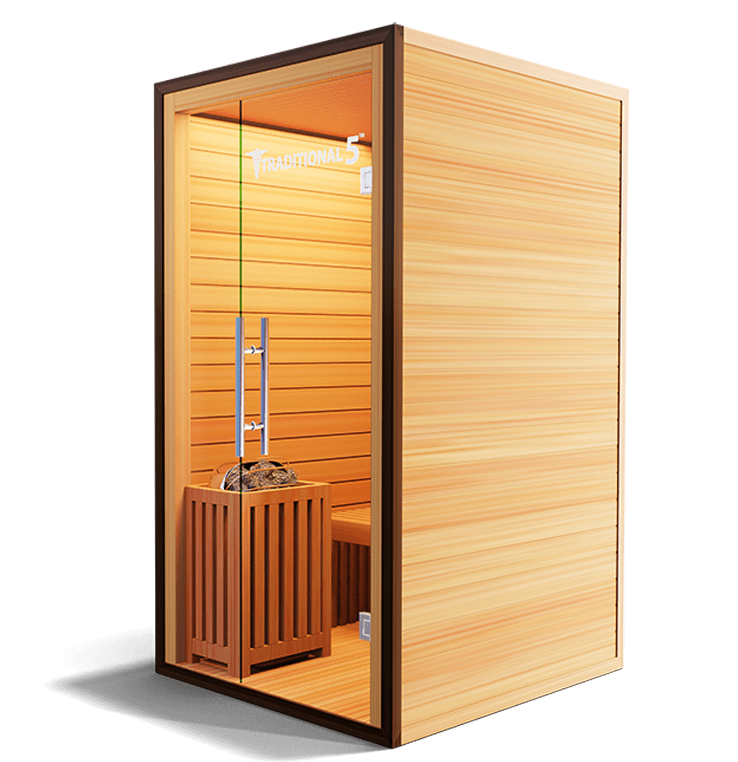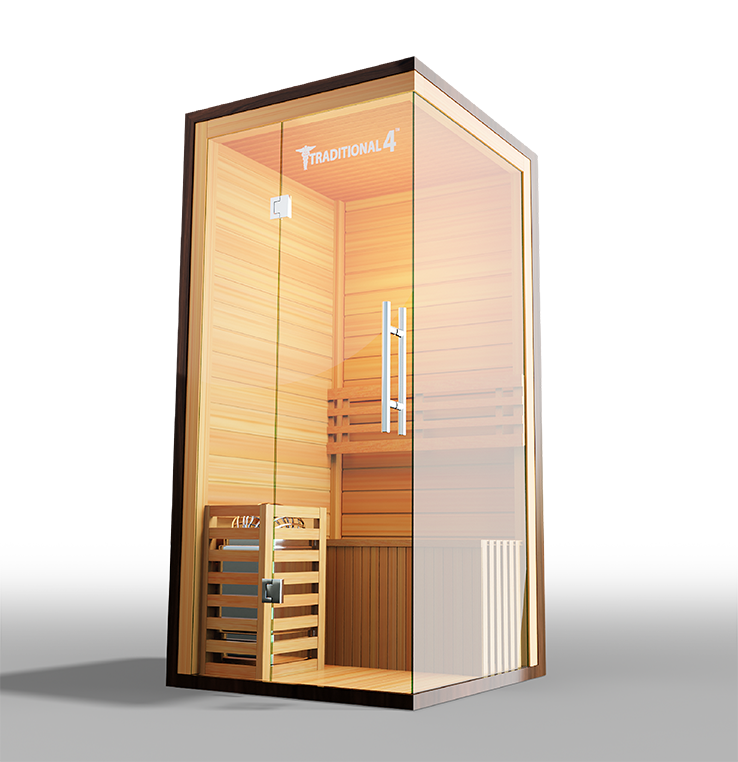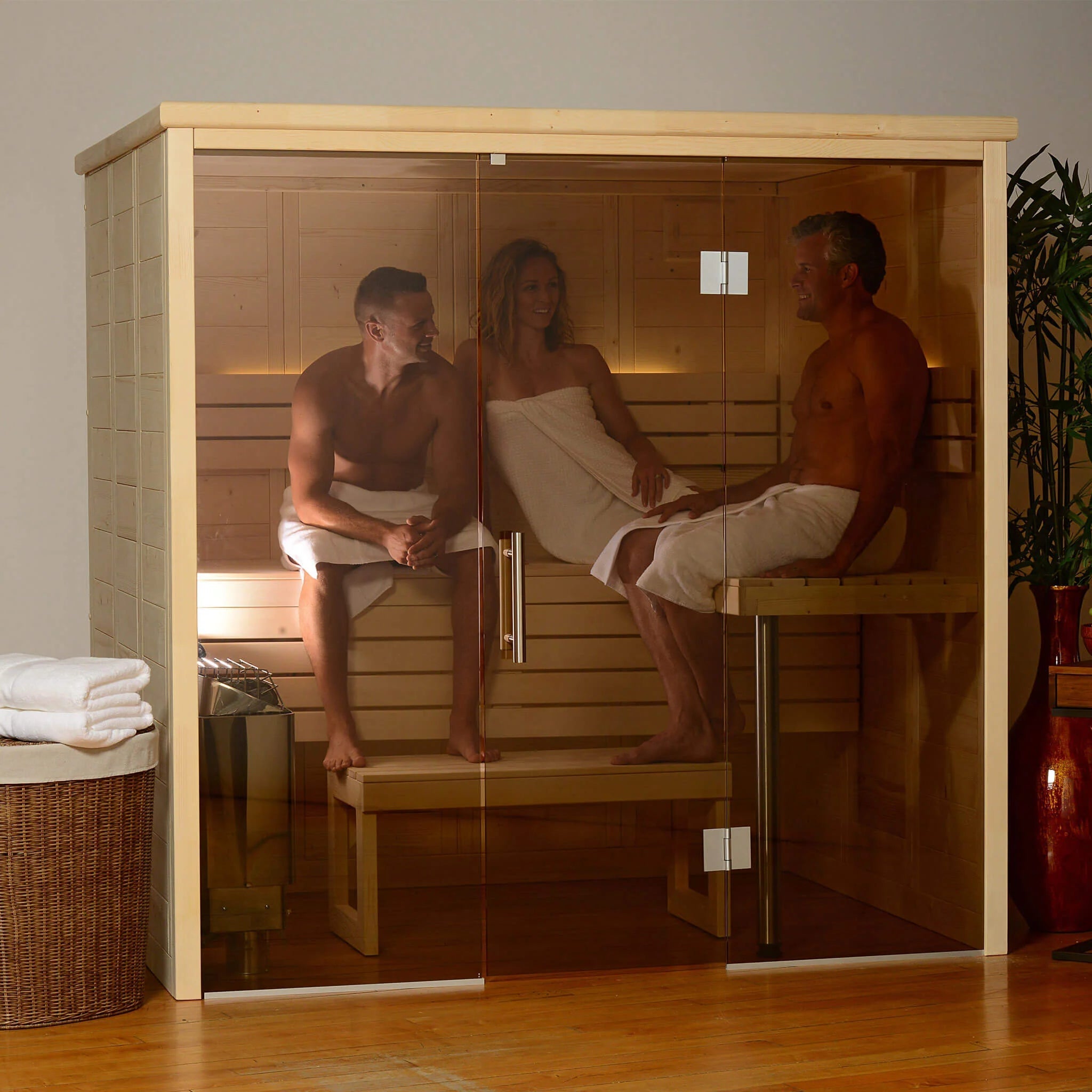The Basic Principles Of Traditional Sauna
The Basic Principles Of Traditional Sauna
Blog Article
Some Ideas on Traditional Sauna You Should Know
Table of ContentsSome Of Traditional SaunaWhat Does Traditional Sauna Mean?The Single Strategy To Use For Traditional SaunaThe Facts About Traditional Sauna RevealedThe 10-Minute Rule for Traditional Sauna
A lot of the weight lost in a sauna is water loss and is re-gained upon rehydrating. Without a question sauna can be a vital part of a healthy weight loss program. To take a look at the differences between conventional and IR saunas, I will separate these into verifiable, theoretical, and fabricated differences.Thus, the hottest point in the saunawhich goes to the ceiling straight over the sauna heateris usually in between 185 and 190 F. Claims that a typical sauna goes beyond 200 F is merely not real and not suitable for electrical saunas offered in the US. The temperature level for a far-infrared sauna is normally set between 120 and 140 F; however, unlike the conventional sauna, the goal in and IR area is not to attain a high temperature level.

When a traditional sauna has actually been properly warmed, the sauna wall surfaces are warm, the air temperature level has actually accomplished established temperature and the rocks are extremely warmed. As a fascinating side note, the warmed walls and the rocks are producing far-infrared heat, incorporated with the heated air, to develop an "enveloping warmth".
The Main Principles Of Traditional Sauna
When the heat is achieved, the aspects cycle on and off to maintain the heat. The majority of standard sauna customers enjoy putting water over the rocks to create steam to increase sauna moisture degrees. The advantages of pouring water over the rocks include: making the space extra comfy, moistening the nasal flows, and enabling the use of aromatherapy by mixing essential oils with the water.

When the power gets in the body, it creates the body temperature level to boost and eventually leads to sweating. In an infrared sauna it's essential for the emitters/heaters to stay on practically continuously. Because there is no mass of rocks to preserve warmth, the sauna will certainly cool down if the emitters shut off.
Traditional Sauna Fundamentals Explained
As stated over, the sauna bather in an infrared room wants to place himself in front of operating emitters to get maximum gain from the warm. The home heating time for the two areas can be extremely various, depending upon exactly how the spaces are made use of. For a traditional sauna, a bather needs to allow 30-40 mins for the area to accomplish a wanted temperature level and to effectively pre-heat the rocks.

A well constructed sauna will usually accomplish a temperature of 150-160 F in about 30-40 minutes. For hotter temperatures, the area might require to warm for a longer duration.
To some, 15 minutes was "lost" while the infrared energy heated the timber panels instead of heating a body, while others find a pre-heated room to be much more comfortable and think a raised starting temperature is required to begin sweating. The length of suggested use for every room is around the exact same (10-15 mins per session); nonetheless, as a result of the reduced air temperature levels and the capability to really feel the impacts of infrared warm quicker than a standard sauna, it is not uncommon for an individual to invest an overall of 20-30 mins in an infrared sauna.
The Ultimate Guide To Traditional Sauna

The typical price per kWH of electrical energy in the U.S. is around $0.11, so a 4.5 kW heating system will certainly cost about $.50 to run for one hour, if the heating unit runs continually for one hour. Usually a sauna heater will compete 75% of the initial hour and 50% of subsequent hours on because the elements cycle once the established temperature is accomplished.
A 2 person far-infrared room is generally literally smaller sized than a typical sauna, typically concerning 4' x 4' or smaller sized. The IR home heating system is usually 1.5-1.7 kW making use of a 120 volt 15 amp plug-in service. Since the area can be utilized faster than a sauna space, we will presume the space is made use of for to of an hour consisting of warmth up time.
There is a seldom talked about difference in the social experience between the two rooms. While our culture has actually shed several of the social advantage of the typical sauna experience, it can be really socially fulfilling (Traditional Sauna). From family members time in the sauna, to heart-felt discussions have a peek at this site with loved ones, to sauna partiesthe typical sauna experience can bring about intimate mingling
An Unbiased View of Traditional Sauna
A lot of greater end infrared spaces consist of colored light therapy, noise systems and full-glass fronts.
Report this page